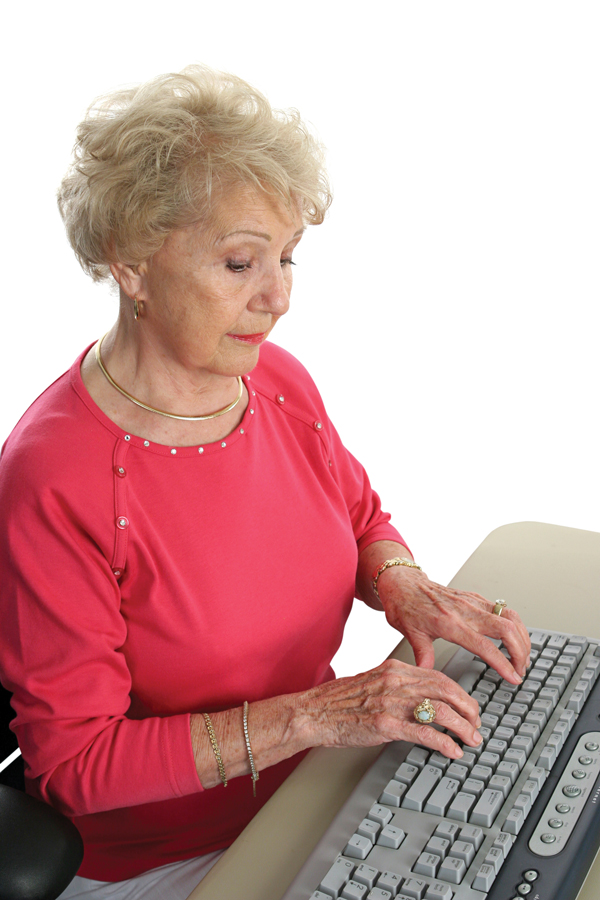Mary loved her job as a recreational therapist in a skilled nursing facility. Her co-workers marveled at her ability to assess the needs of residents and propose exactly the right activity for a patient recovering from a brain injury, stroke or other trauma. Her 30-plus years of experience in all manner of expressive arts therapies helped her serve patients well. She worked efficiently and effectively with quiet compassion. And then came the inevitable hours of paperwork. For Mary, writing long, detailed notes in medical charts was a normal part of her day, but she wasn't as quick as she had been in the past and documentation requirements were increasing. Mary's immediate supervisor, 15 years her junior, pushed her to speed up. Mary felt stressed and unable to cope with the continuing pressure. After starting to dread her job and feeling like she was getting worse instead of better, she applied for and received a medical leave of absence. Was this the best solution for Mary and her employer? Employers today are facing the fact that they need to keep the older workforce in place longer. Baby boomers make up about one-third of the U.S. workforce and for the first time in several generations, there are not enough younger workers to replace them. Key industries, especially those that rely on workers with proven performance, knowledge, skills and self-confidence, will be forced by labor shortages to rethink employee retention and how best to ensure health and safety by adjusting equipment and the work environment. The reality is that people are living longer, healthier lives and can remain robust contributors to the workforce much longer than any previous generation. While age does not determine fitness, there are predictable changes that occur with time. The following are guidelines for employers who want to maximize the working environment for their most valuable asset: the reliable, responsible, loyal, conscientious, cooperative and collaborative older worker.
- Maintaining an unmoving position for a long time is very tiring, especially standing, which puts pressure on blood vessels. Repeated and prolonged static work can be harder on the body than dynamic work. Provide opportunities to change posture or position during the workday. Adjust work surfaces to encourage position changes.
- Sitting is generally good if chairs are ergonomic, or at least well-designed and adjustable. To avoid the dangers of prolonged sitting—weakened abdominal muscles, digestion and breathing problems and damage to spinal discs—provide training and information on sitting properly and permit opportunities to walk around and stretch.
- Provide appropriate equipment to assist with any type of lifting. Workers of all ages are vulnerable to injury by improper technique and lifting objects that are too heavy. Teach them to decrease the need to twist the trunk of the body during lifting, using leg strength rather than leaning over and placing the load as close to the body as possible.
- Because grip strength gradually decreases as we get older, the correct handle or grip becomes important. Smaller handles become more difficult to use. Provide tools and controls with user-friendly handles.
- The amount of light reaching the retina of the eye declines by as much as 75 percent from age 20 to 50. Improved lighting, such as the softer light given off by lamps, helps all workers. Problems with adjusting to lighting contrasts can be improved by ensuring that the level of lighting in the room is similar to the light level on computer screens in the environment. Reduce eye strain with antiglare filters or low-glare computer screens.
- Gradual, age-related hearing loss and decreased ability to hear high-pitched sounds can be addressed by minimizing air-conditioning noise and installing sound-absorbing material to neutralize sound. In open office areas, a white-noise machine turned to the lowest setting can help filter distractions such as co-workers' phone calls.
- Offer incentives to encourage people to take part in fitness classes and smoking cessation campaigns. Older workers are more vulnerable to the possibility of sudden-onset and lasting health problems, especially if they are unfit or overweight.

The previous tradition of older supervisors and younger workers has changed. It is important that younger supervisors are aware of different generational values and attitudes but avoid adopting a child-to-parent attitude toward an older worker. At the same time, older workers should be held to the same performance and safety standards as their younger peers. Remember that each individual, whether older or younger, is different. In Mary's case, her facility eventually adopted a voice-activated recording system which helped staff at all levels of the organization to get their notes written in a timely manner. Businesses can improve their employee practices by having supervisors attend workshops on aging and the workforce. Talk to other employers who have successful experiences with hiring older employees and encourage employee feedback on aging issues by surveying your employees and listening to their concerns and suggestions. Hiring and retaining older workers can help your business grow.
